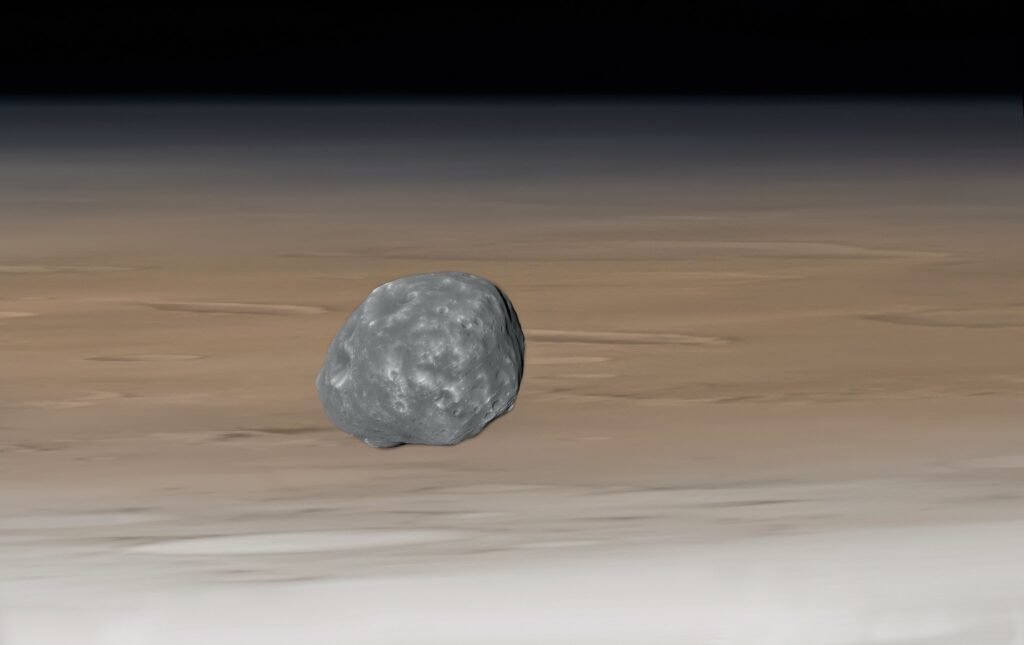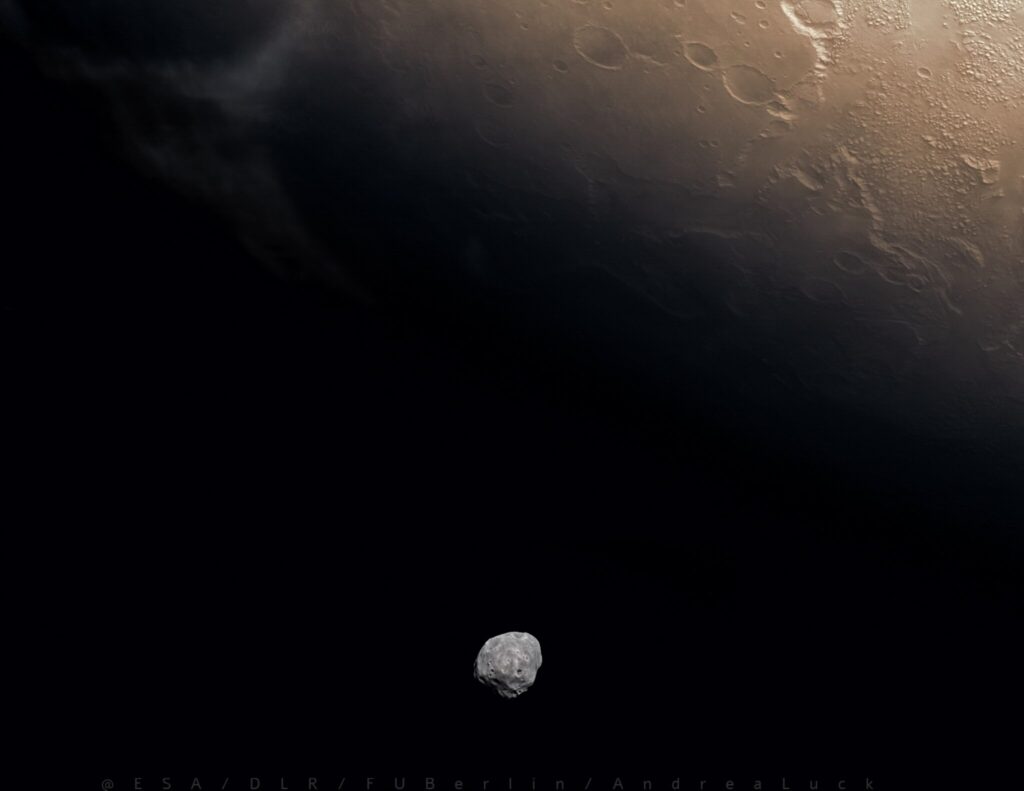British astro enthusiast Andrea Luck has published very spectacular images taken by him during the processing of images of the Mars Express mission. They demonstrate the Phobos moon over the Martian surface.

Phobos is the largest of the two Martian moons. Its diameter is 22 km. For a long time it was believed that, together with Deimos, it is an object of the Main Asteroid Belt, once captured by Mars. But recently, the hypothesis has gained popularity in the scientific community, according to which moons “gathered” in an areocentric orbit from a substance knocked out from the surface of the Red Planet during some major collision.
The main feature of Phobos is its orbit. The fact is that it passes at a distance of only 6 thousand km from the Martian surface. Thus, Phobos is the closest natural moon of the Solar System to the planet.
Moreover, Phobos is gradually approaching the Red Planet. Martian gravity is already having a noticeable effect on it — interplanetary spacecraft have photographed a number of furrows on the surface of Phobos. When the moon crosses the Roche limit, it will simply be torn apart. According to various estimates, this will happen in 30 – 50 million years.

The cataclysm will lead to the fact that Mars will temporarily acquire a ring that may even surpass the famous rings of Saturn. However, over time, the debris formed during the destruction of Phobos will fall on Mars. After that, the Red Planet will have only one natural moon.
Recall that in 2024, JAXA is going to send an MMX mission to Phobos. It will have to deliver a sample of its matter to Earth, which will allow us to answer the question about the origin of the moon.
Follow us on Twitter to get the most interesting space news in time
https://twitter.com/ust_magazine

